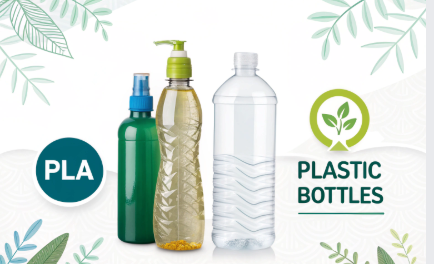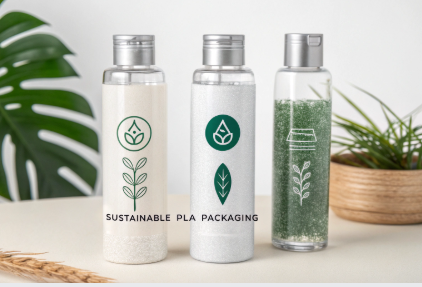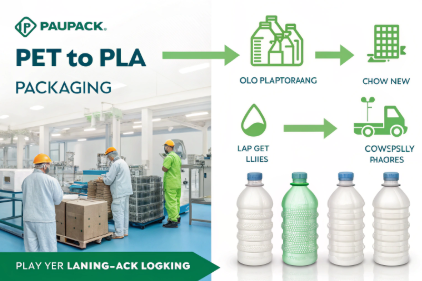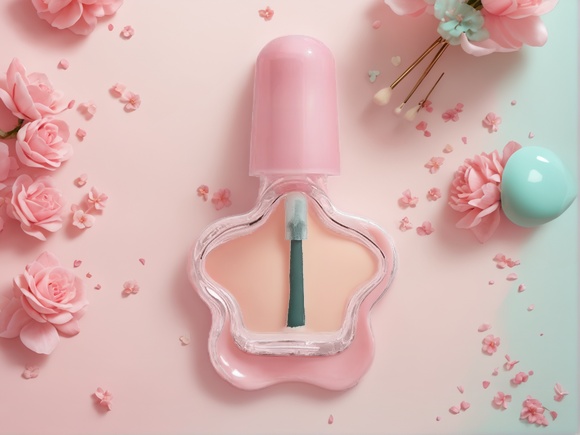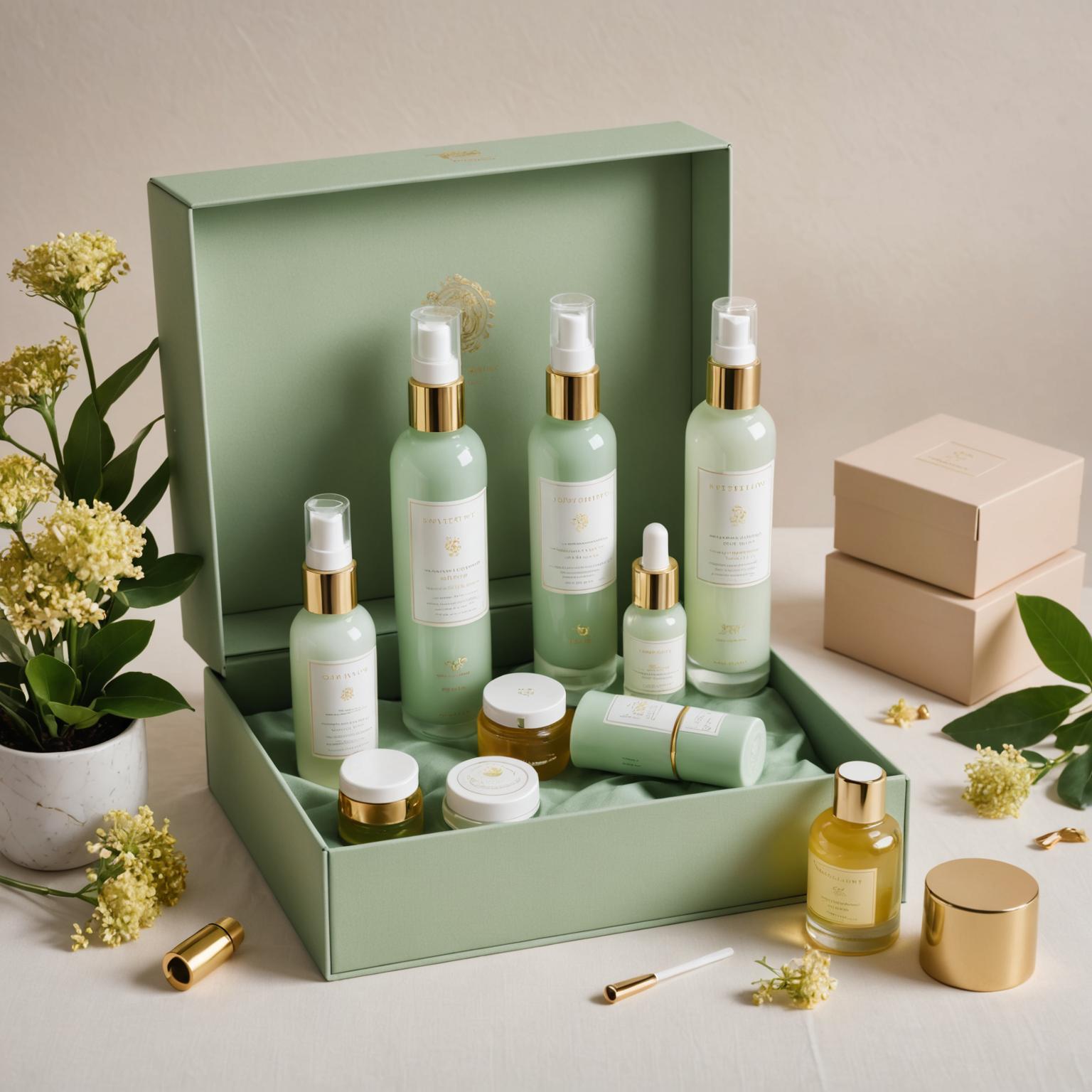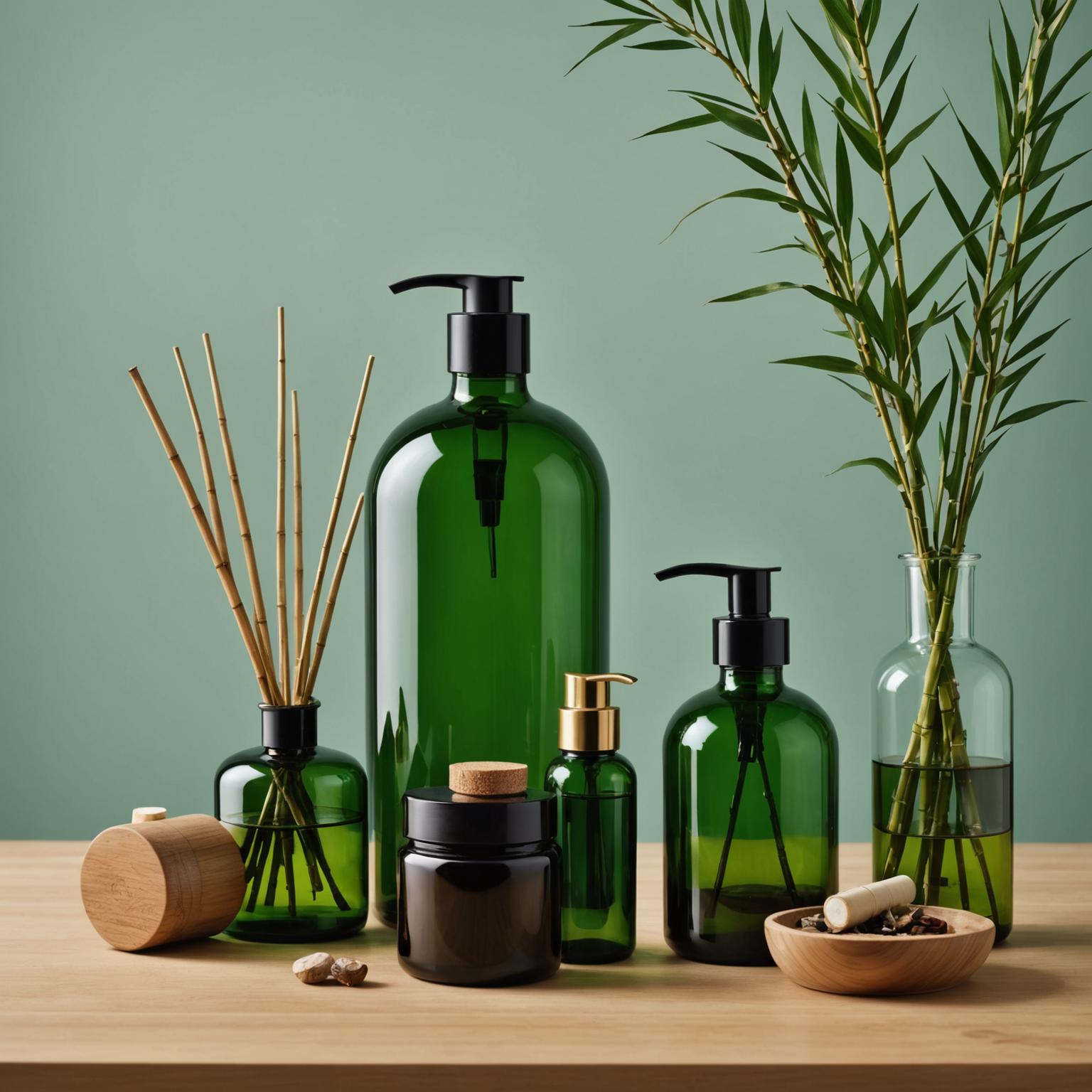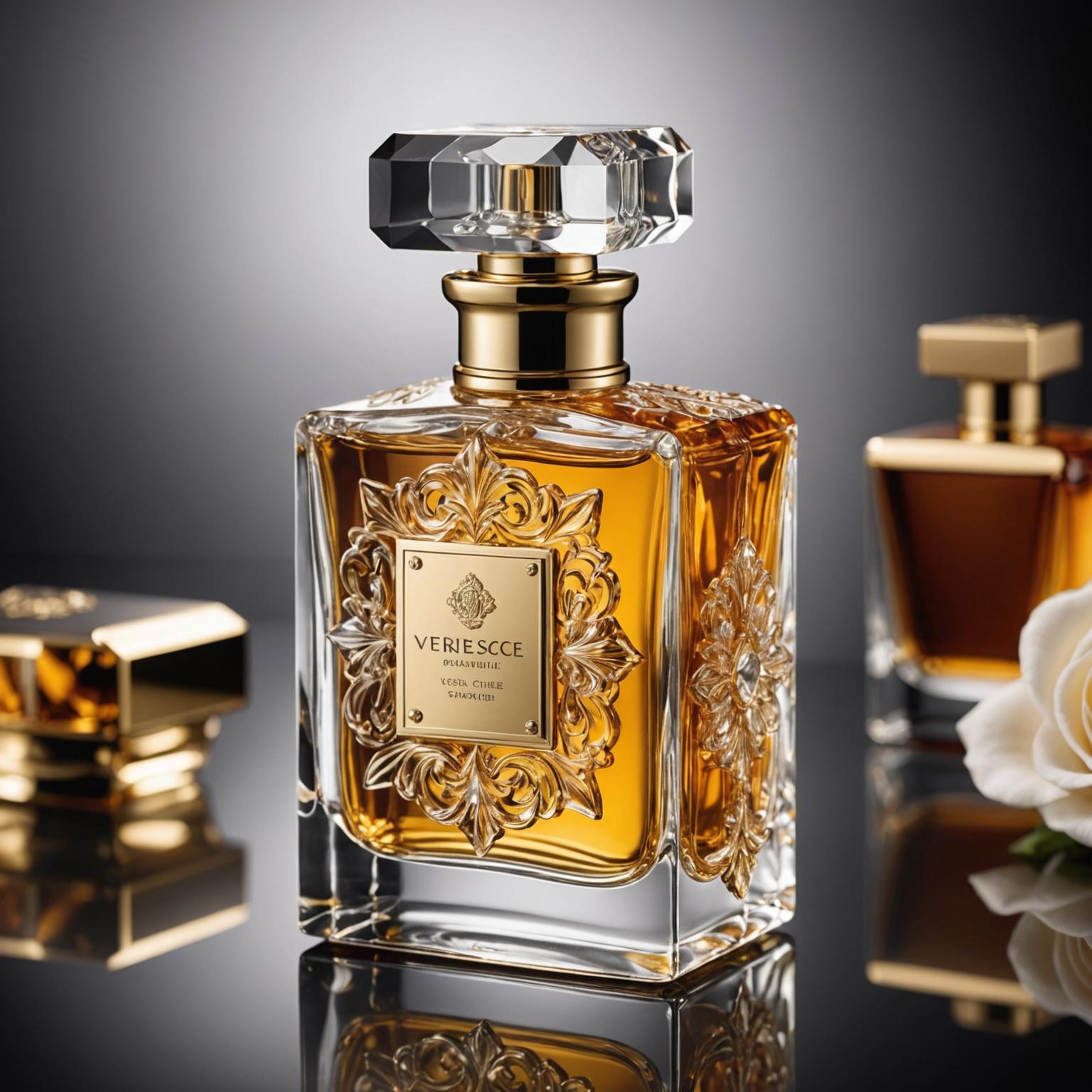You want sustainable packaging, but you also need bulk pricing, durability, and reliable lead times. Can PLA bottles deliver on all fronts?
PLA bottles offer a biodegradable, plant-based alternative to traditional plastic, with advantages in eco-impact and brand positioning—especially for bulk buyers focused on sustainability.
If you're comparing material options for your next production run, here's a breakdown of what truly matters when choosing between PLA and conventional plastic.
What Is PLA and How Does It Differ from Conventional Plastics?
Not all plastics are created equal. PLA is part of a new generation of bioplastics.
PLA (polylactic acid) is a biodegradable material made from renewable plant sources like corn starch or sugarcane, unlike traditional plastics derived from fossil fuels.
Key Differences Between PLA and Traditional Plastic
| Property | PLA | Traditional Plastic (PET/PP/HDPE) |
|---|---|---|
| Source | Renewable (plant-based) | Petroleum-based |
| Biodegradability | Industrially compostable | Non-biodegradable |
| Appearance | Clear, glossy, smooth | Variable clarity and texture |
| Toxicity | BPA-free, non-toxic | May contain chemical additives |
| End-of-Life | Composting or incineration | Landfill, recycling (if possible) |
At PauPack, we offer PLA bottles designed for beauty, wellness, and personal care packaging that meet both functional and environmental standards.
How Do PLA Bottles Perform in Durability, Shelf Life, and Product Safety?
Eco-friendly doesn't mean compromising on quality—especially in skincare or medical products.
PLA bottles offer solid performance in controlled conditions but have limitations in heat resistance and oxygen permeability, making them ideal for dry, cool-filled products.
Performance Breakdown
| Feature | PLA Bottles | PET/HDPE Bottles |
|---|---|---|
| Heat Resistance | Low (up to 50°C) | High (up to 120°C) |
| Barrier Properties | Moderate (good for creams, dry goods) | Excellent for oils, liquids |
| Chemical Resistance | Compatible with mild formulas | Wide range of compatibility |
| Shelf Life | 6–12 months (dry storage) | 2+ years |
| Break Resistance | High | High |
Our team at PauPack helps clients match the right PLA packaging with their product profile—especially for powders, lotions, or solid cosmetics that don’t require high thermal tolerance.
What Are the Environmental Benefits of PLA in Bulk Production?
B2B buyers are under pressure to meet both sustainability goals and regulatory benchmarks.
PLA bottles reduce carbon footprint, support compostability targets, and align with CSR initiatives—especially in high-volume production.
Eco Advantages of PLA
-
✅ Made from renewable biomass (corn, sugarcane)
-
✅ 60% less greenhouse gas emissions than PET
-
✅ Industrial composting compatibility (under specific conditions)
-
✅ Non-toxic decomposition (no microplastics)
-
✅ Recyclable in dedicated bioplastic systems
PauPack’s PLA production line uses 100% renewable energy and 80% closed-loop water systems, helping our clients earn LEED credits and meet EU Green Deal standards in their packaging supply chain.
How Do PLA and Traditional Plastic Compare in Terms of Cost and MOQ?
Sustainability often comes with a price—but it doesn’t have to be out of reach.
PLA bottles have historically been more expensive, but modern production and global demand have narrowed the cost gap—especially for bulk orders.
Cost Comparison (per 10,000 units)
| Material | Average Unit Price | Typical MOQ | Tooling Cost | Reusability |
|---|---|---|---|---|
| PLA | $0.19–$0.25 | 1,000–5,000 pcs | Moderate | Compostable |
| PET | $0.13–$0.18 | 10,000 pcs+ | Low | Recyclable |
| HDPE | $0.10–$0.15 | 5,000 pcs | Low | Recyclable |
At PauPack, we offer flexible PLA MOQs starting from just 1,000 pcs, making it accessible even for test launches or seasonal SKUs. Our OEM/ODM packaging service helps reduce per-unit costs by integrating design, mold development, and printing under one contract.
Why PauPack Recommends PLA Bottles for Brands with Green Goals?
We’ve worked with over 200 clients shifting toward more sustainable packaging—and PLA consistently delivers results for those with purpose-driven branding.
PauPack recommends PLA bottles for brands focused on clean beauty, aromatherapy, organic skincare, and health supplements who want to reduce plastic waste without compromising aesthetics.
Why Our Clients Choose PLA with PauPack
-
100% renewable, plant-based material supply
-
Compatibility tested with cosmetic and food-safe formulas
-
Sleek bottle shapes with matte, gloss, and frosted options
-
Custom decoration with eco-friendly ink and laser marking
-
Bulk-ready with global logistics and local warehouse delivery
Whether you're scaling up a refillable program or launching a new clean line, we help align your packaging with the values that matter to your customers—and regulators.
Can PLA Packaging Strengthen Your Brand’s Sustainability Narrative?
In the age of conscious consumption, sustainability isn’t a side story—it’s the story.
Yes, PLA packaging enhances your green brand image by aligning product experience with eco-values, especially in clean beauty, wellness, and organic food markets.
Marketing Impact of PLA Packaging
| Brand Positioning | PLA Advantage | Emotional Effect |
|---|---|---|
| Clean / Natural | Plant-based, non-toxic | Builds ingredient trust |
| Eco-Conscious | Compostable, low carbon | Shows environmental responsibility |
| Premium Minimalist | Smooth, modern finish | Reflects quality and intention |
| Wellness-Driven | Bio-origin, safe touch | Appeals to health-aware shoppers |
At PauPack, we’ve helped wellness brands replace virgin PET with PLA while keeping their aesthetic identity intact—from soft-touch creams to matte-finish toner bottles.
How Are Global Regulations Shaping the Shift Toward PLA?
What used to be optional is now increasingly regulated. Governments are pushing packaging away from single-use petroleum-based plastics.
Major markets are introducing bans, taxes, or incentives that favor biodegradable or compostable materials like PLA.
Global Trends You Should Know
| Region | Regulation | PLA Impact |
|---|---|---|
| EU | Single-Use Plastics Directive | Push for compostable & recyclable alternatives |
| U.S. (California, NY) | Plastic reduction laws | PLA exempt from bag/bottle bans |
| Australia | Phasing out non-compostables by 2025 | PLA aligned with national targets |
| Canada | Federal single-use bans | PLA containers gaining traction in food + beauty |
PauPack’s PLA solutions are pre-aligned with EU and U.S. compostability standards and come with clear material origin documentation—making export easier and faster.
What Do End-Users Think About PLA Bottles in Real-World Use?
Customer perception can make or break your packaging upgrade. Good news—PLA performs better than you think.
Most end-users report high satisfaction with PLA bottles, particularly for feel, look, and values alignment—but expectations around heat resistance and durability must be managed.
PLA User Experience: Feedback Snapshot
| Factor | User Response | Recommendation |
|---|---|---|
| Visual Appeal | Modern, clean, premium | Enhance with matte or frost finish |
| Touch & Feel | Lightweight, smooth | Use thicker walls for higher-end feel |
| Scent Transfer | Minimal | Safe for essential oils, light fragrances |
| Leak Resistance | Good with proper liners | Use tested cap fit and liner materials |
| Hot Liquid Tolerance | Not ideal | Limit use to ambient or cold-fill products |
Our design team helps ensure that form matches function—developing PLA packaging that pleases both marketing teams and end-users.
Is the Recycling Infrastructure Ready for Large-Scale PLA Adoption?
Sustainability only works if systems support it. So where does PLA stand?
While industrial composting is growing, most cities still lack PLA-specific bins—making end-of-life education essential for brands using it.
PLA End-of-Life: What You Need to Know
| End-of-Life Path | Infrastructure Status | Brand Strategy |
|---|---|---|
| Home Composting | Rare | Not recommended claim |
| Industrial Composting | Expanding in EU, US metro areas | Add “Check local facilities” label |
| Recycling | Not mixable with PET/HDPE | Label as PLA #7 clearly |
| Incineration | Lower emissions than PET | Acceptable in energy recovery markets |
At PauPack, we provide end-of-life icons, QR-enabled consumer education labels, and compostability info sheets to help your packaging stay responsible beyond the sale.
How PauPack Helps You Transition from PET to PLA Without Risk?
PLA sounds great—but how do you switch without slowing down your go-to-market plan?
PauPack offers a low-risk, fully supported pathway from PET to PLA, including prototyping, compatibility testing, and supply chain integration.
Our PLA Services Include:
-
Material testing with actual formulas (oils, creams, powders)
-
Moisture and oxygen barrier adjustments based on product type
-
Custom mold development or PET-to-PLA conversion for your current SKU
-
Logistics-ready bulk production with consistent batch quality
-
Sustainability claim verification and marketing copywriting support
Whether you’re planning a limited-run “green edition” or a full packaging transformation, PauPack is your certified, scalable PLA partner.
Conclusion
PLA bottles are more than a trend—they’re a practical, planet-positive upgrade for brands committed to the future. With PauPack’s end-to-end support, you can switch sustainably, without compromising performance or scalability.





